Thanks to Essex Ham member Paul G7BHE for submitting the following review:
Hands on with the AnyTone AT-D868UV Dual-band DMR Handheld
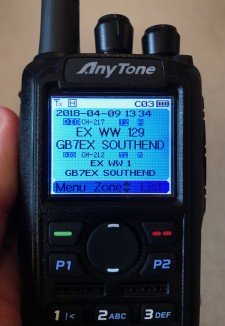 Having seen one of these strapped to another Ham’s hip at a recent Suffolk RED, I instantly liked it and found myself buying one at the SEARS Canvey Radio Rally this year.
Having seen one of these strapped to another Ham’s hip at a recent Suffolk RED, I instantly liked it and found myself buying one at the SEARS Canvey Radio Rally this year.
So what is it? The AT-D868UV is a handheld radio that is capable of DMR mode and FM. It operates in the 70cm and 2m amateur bands, with an output of 6 watts. It is ETSI Tier II compliant.
First impressions?
Solid, in fact, very solid. This radio has some heft to it. You know you are holding it. It seems to be well made with a nice action on the rotary knobs, substantial belt clip and sturdy antenna. The SMA Female antenna is the rubber duck kind with a curious orange decal at the top. I assume this is so you can see it clearly as you poke your eye out with it.
My unit came complete with two batteries, a programming lead and drop-in charger.
| AnyTone AT-D868UV Availability:
Price: £149 from Mirfield Electronics, Martin Stokes G3ZXZ. Chris Taylor at Moonraker informs me that they are now stocking them too (Although at the time of writing they are not listed on the site). See also: AT-D868UV on eBay |
Button layout is as follows, the side has PTT and two user-assignable buttons. The software allows for quick, medium and long presses, so assigning 6 different options is easy. Being the simple type of person, mine is set for scan and power level.
The front keypad is tactile and gives a nice positive click when operated. On the top is an orange ‘Man Down’ or ‘Emergency’ button. I haven’t played with this as yet.
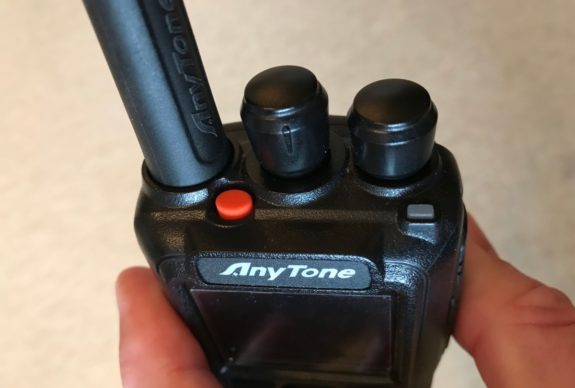
The display is nice and bright. It allows for a significant amount of information. In fact, I found it a little too busy, so I tend to have it in single VFO mode. Speaking of which, yes, this dual bander has a twin VFO allowing for your local DMR repeater or hotspot to be on one and your local FM repeater to be on the other.
Codeplugs
As is always the way, writing the codeplug for a new radio is trial-and-error. I was unable to find a UK codeplug online and set about writing my own. The software is available online free of charge.
Uploading to the radio was very simple using the supplied USB cable and I had no driver issues with Windows 10.
Using the AT-D868UV
The receiver is sensitive enough for everyday use, although I notice it can be a little tardy in opening the squelch when picking up a DMR signal. It’s only short but it can be noticeable. This may be something that can be addressed in settings or with a firmware upgrade.
Transmission wise, I found it to be putting out 5.75 watts into a portable slim jim with a 1:3-1 VSWR on 145.525MHz using FM. I was more than happy with this.
Audio quality was rated as excellent during 2 QSO’s in FM simplex and DMR provided excellent results also. Plugging in an Icom speaker Mic, I found the output audio to be very quiet. It turns out this again is something that is easily rectified in the myriad of settings and shouldn’t be seen as a fault.
Scanning of pre-programmed channels, for instance PMR, I found to be a bit on the slow side. But in fairness to the unit, it isn’t designed to be a scanner and I’m just happy to be able use it as such. Out of band signals from Marine Band and PMR are crystal clear and this radio appears to be very capable.
The drop-in charger was supplied with a Euro plug and I had to obtain an adapter. This is a bit of an annoyance as I’m sure UK style chargers are easily available to the manufacturer.
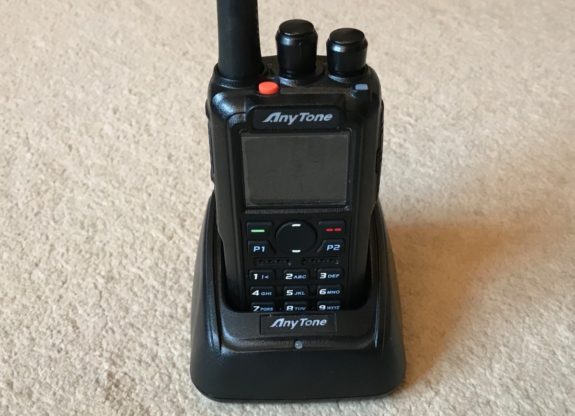
Battery life exceeds what I need and I often find that an evening’s use of monitoring and the occasional QSO makes no noticeable difference to the charge level. The second battery isn’t even out of its cellophane.
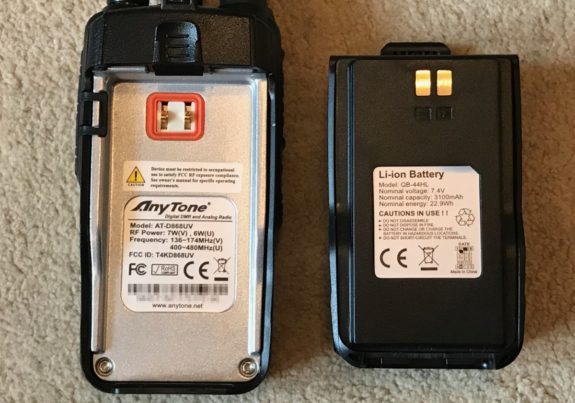
In comparison to other radios, this far and away is a better radio than the TYT MD380. It may not have the design quality of a Motorola, but it’s way cheaper. I know that these are being sold commercially by the manufacturer for use in industry and I have no doubt that they will do well.
All in all, I can thoroughly recommend one of these AnyTones if you are in the market for a new DMR handheld. The downsides are too minor for me and for the money you cannot go wrong.
Information correct as of 9th April 2018.
Best 73,
Paul G7BHE
AnyTone AT-D868UV DMR Handheld Image Gallery
Thanks to Paul G7BHE for this excellent first-look at the AnyTone AT-D868UV. Any questions, or comments? Please add them below.

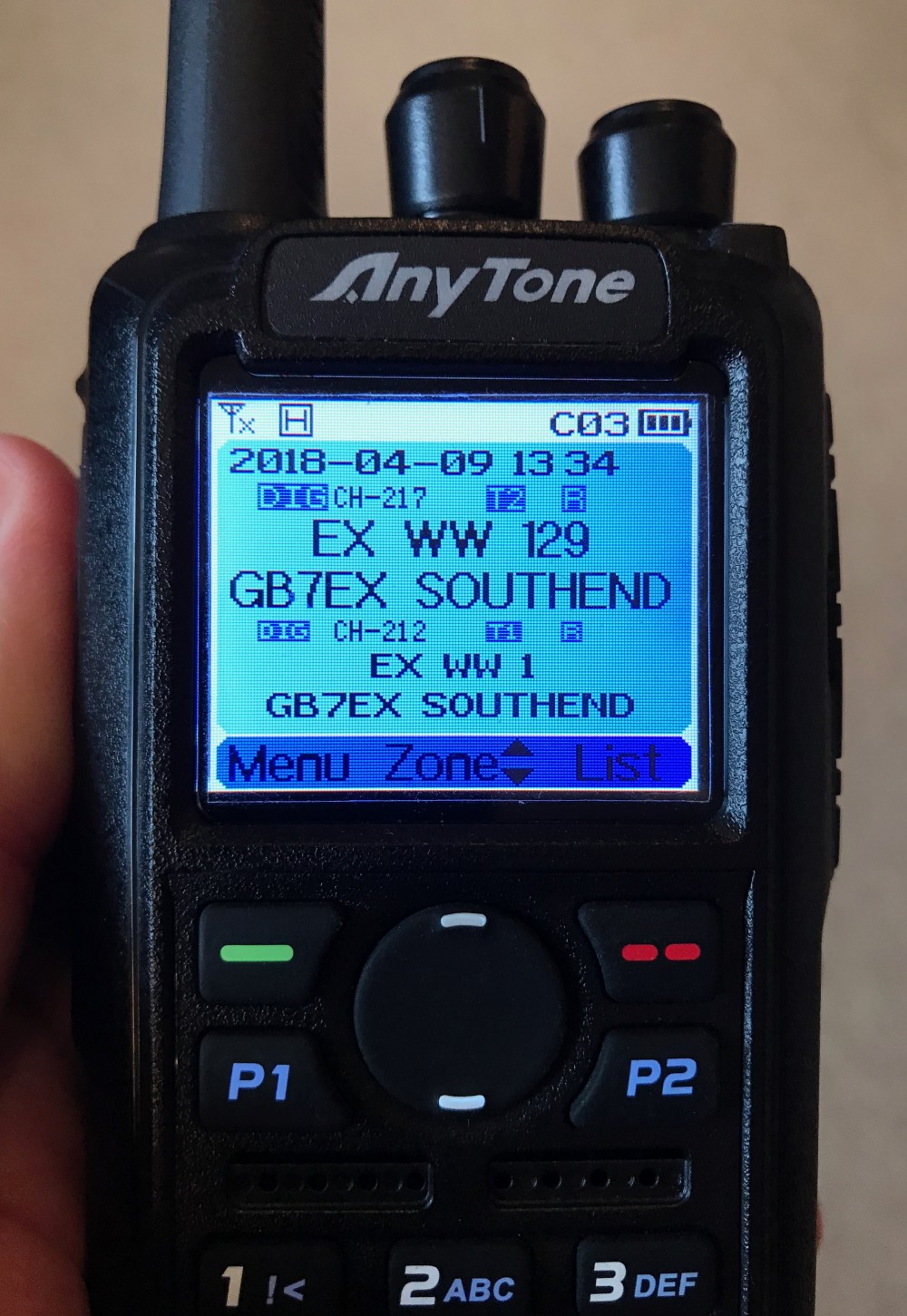
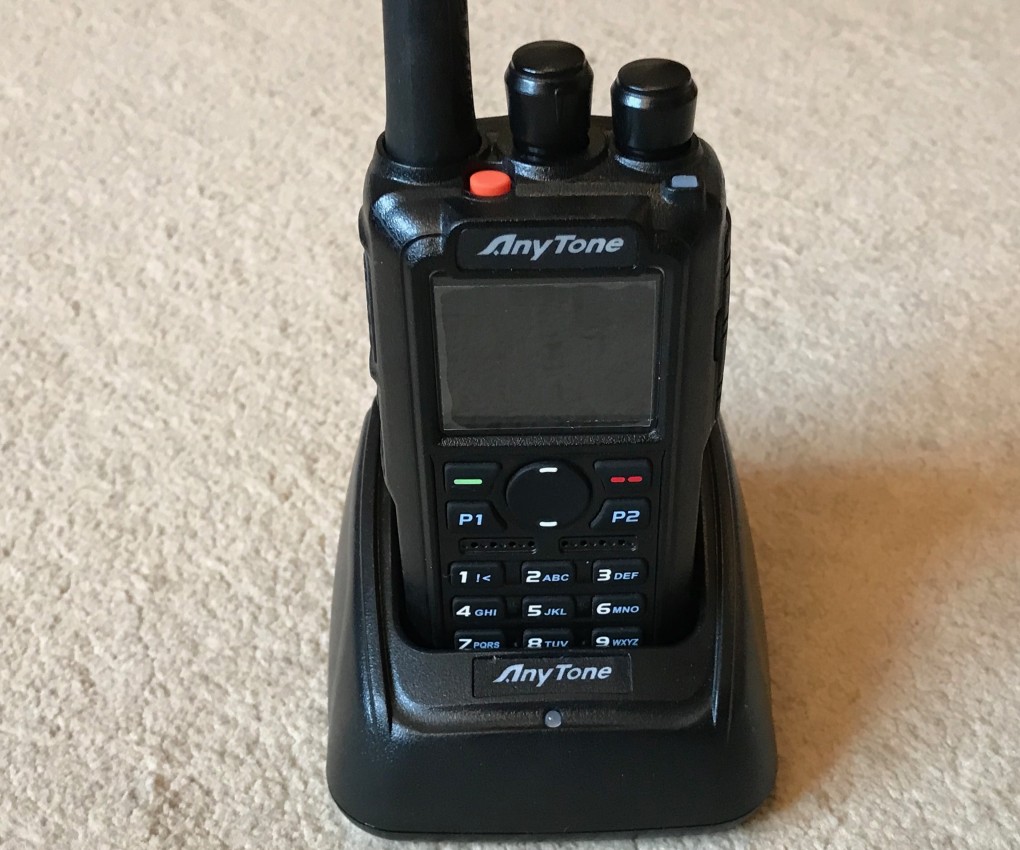
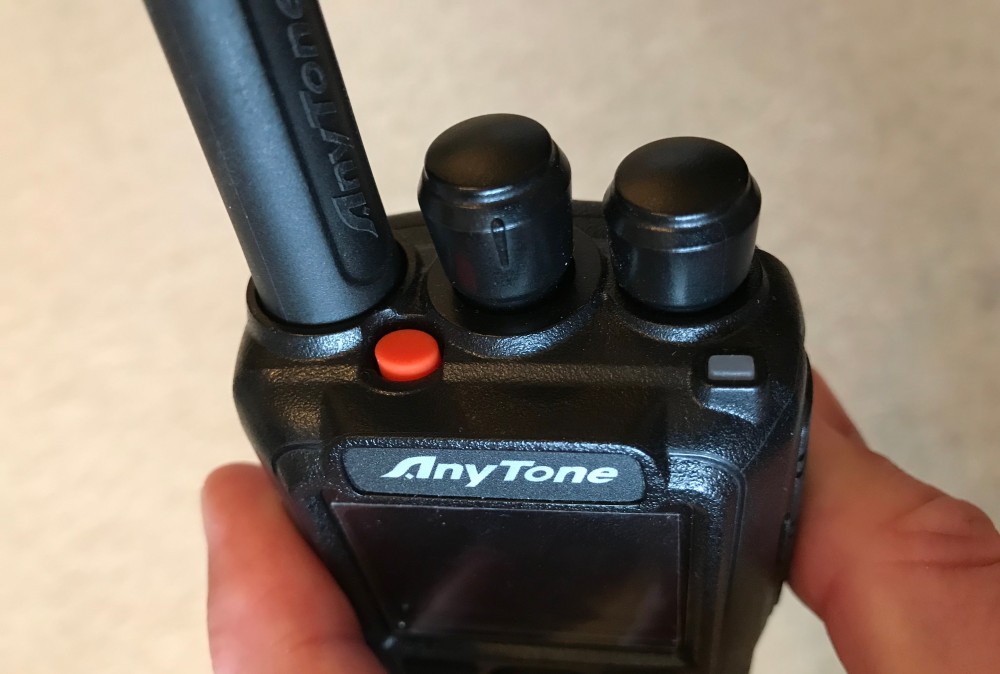
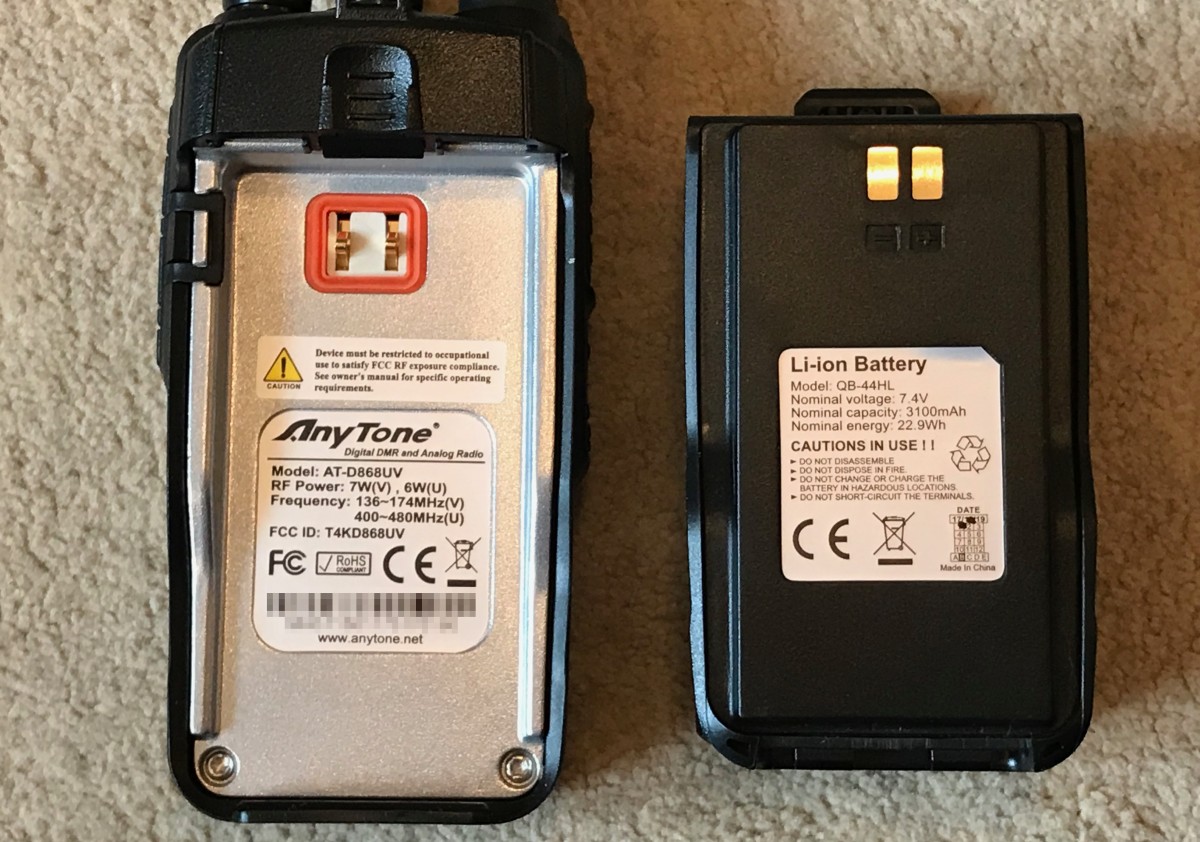
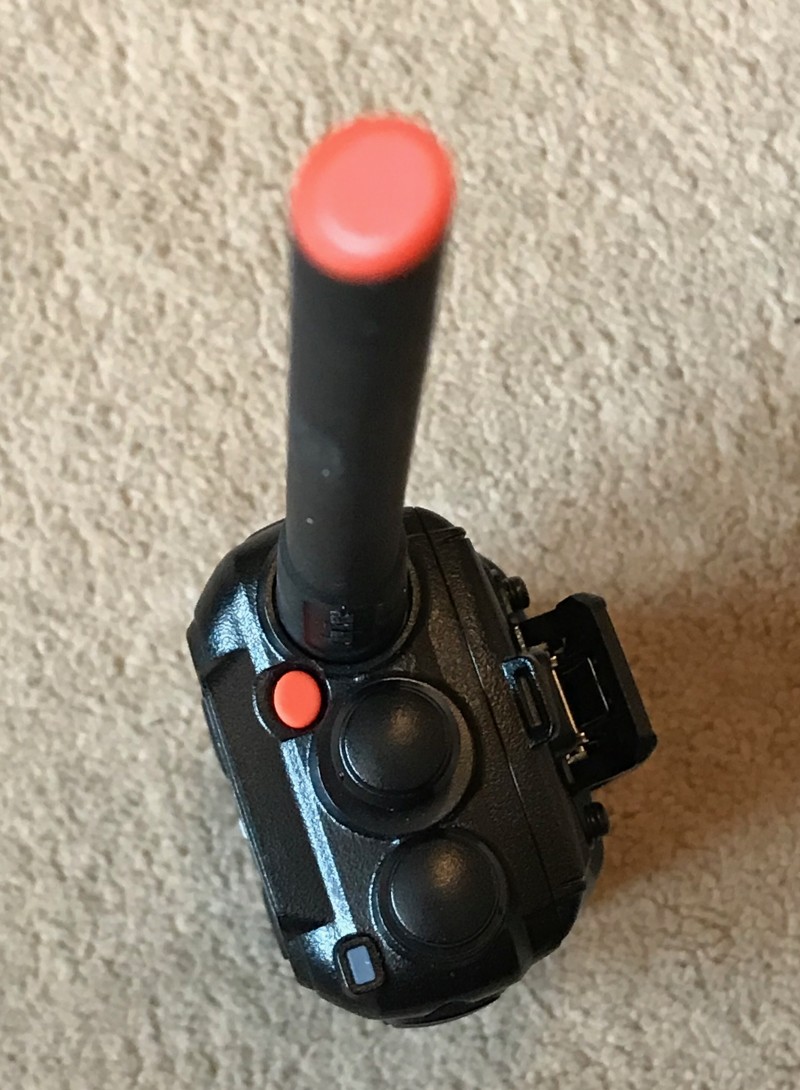
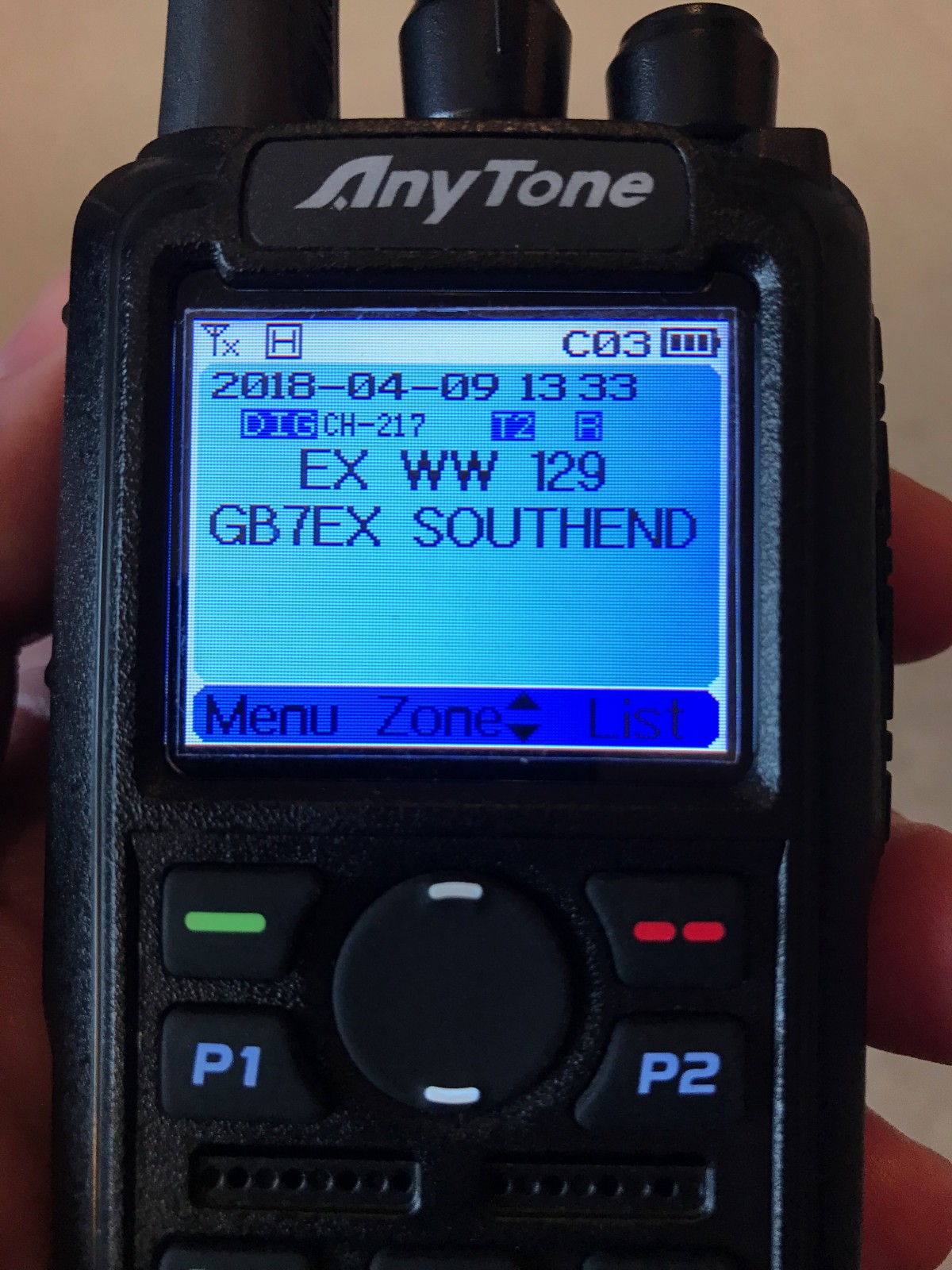
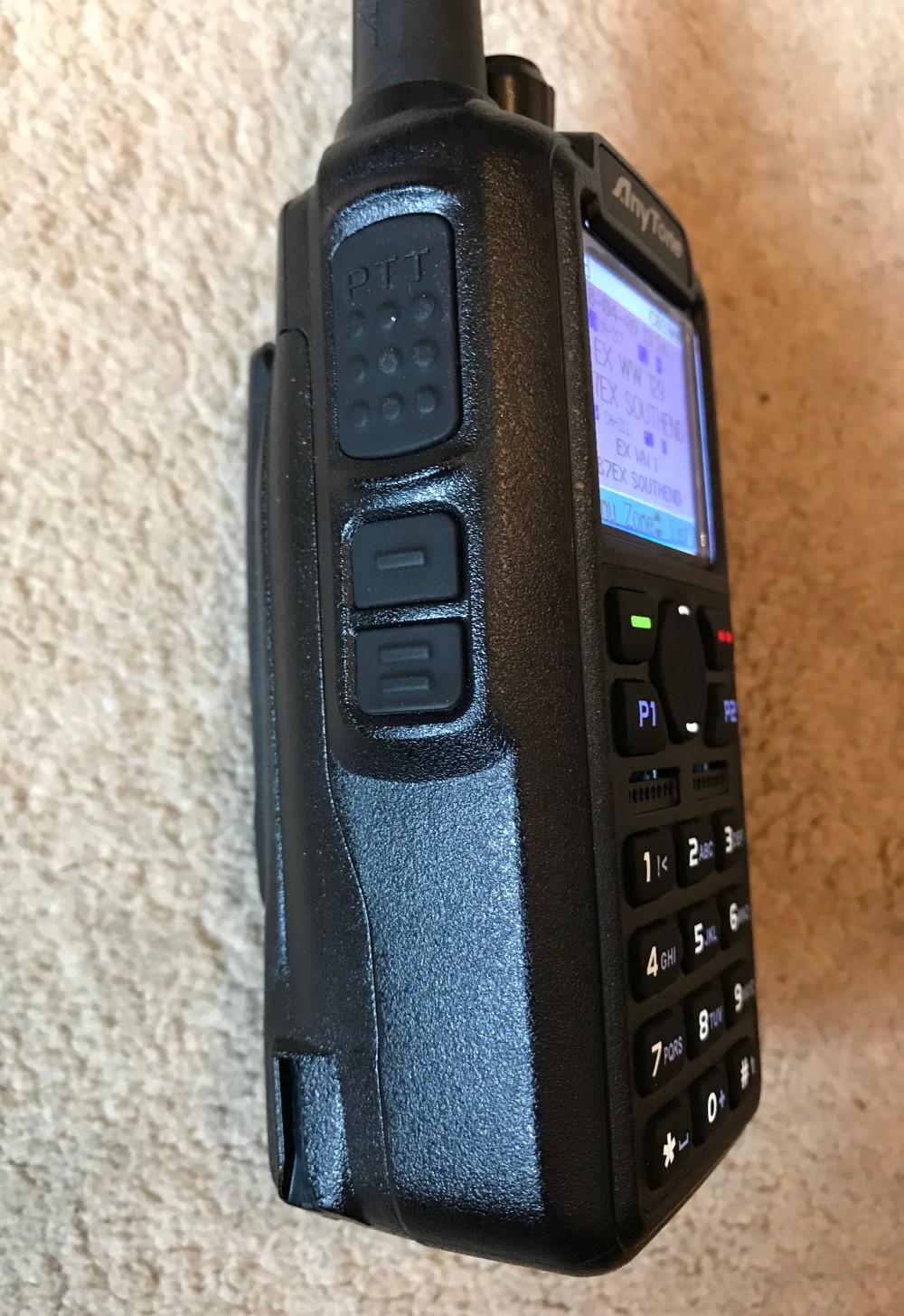
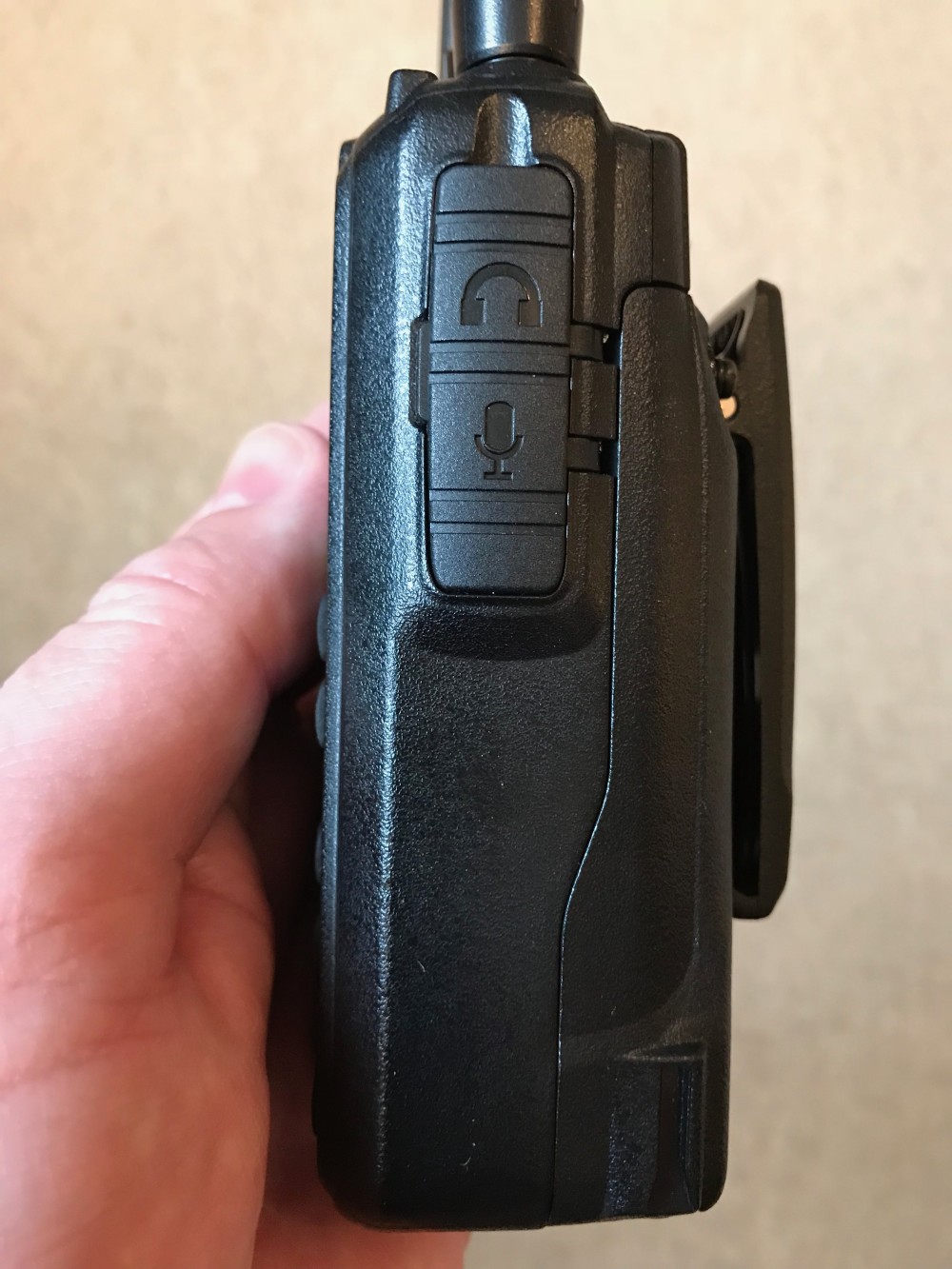
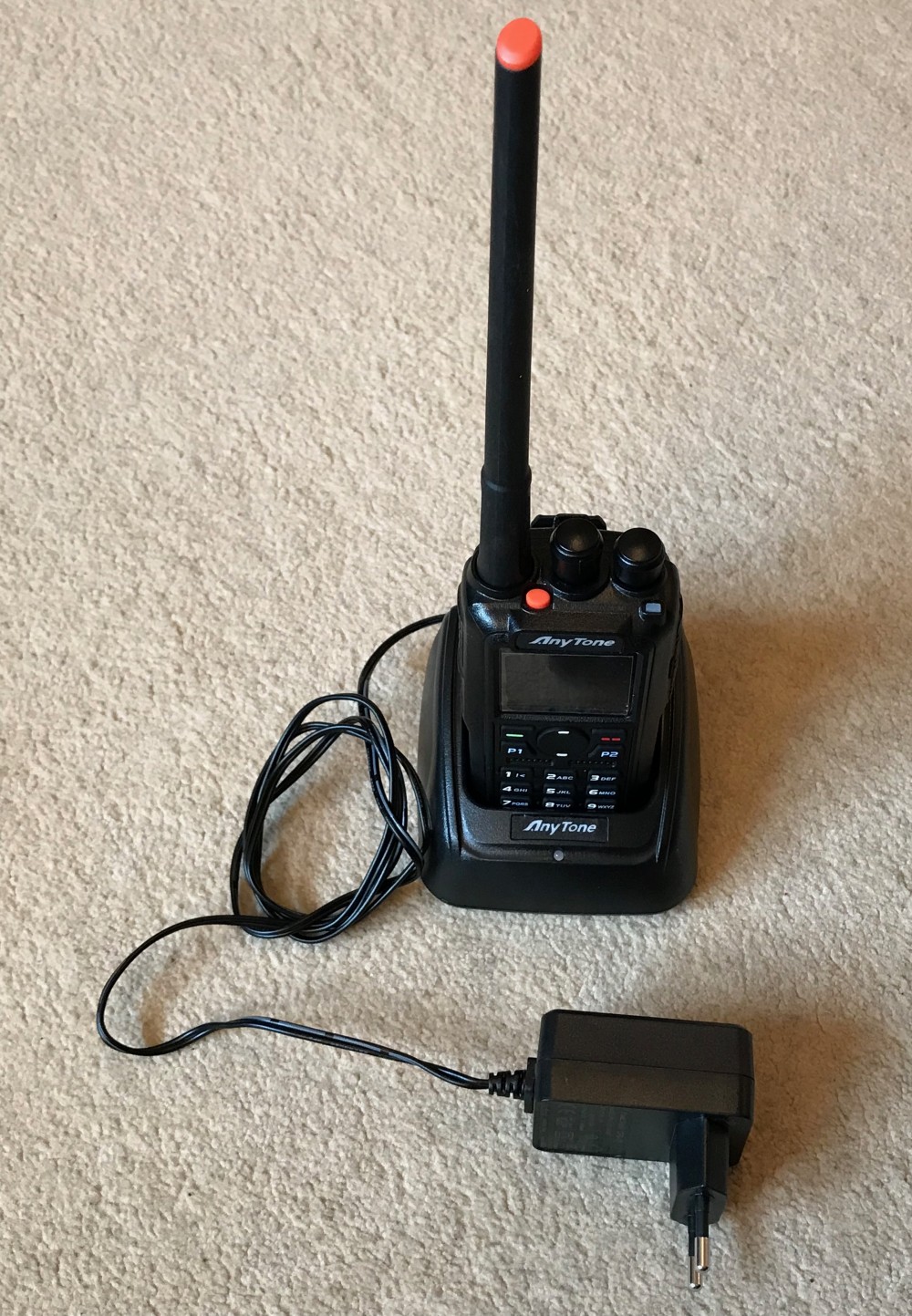
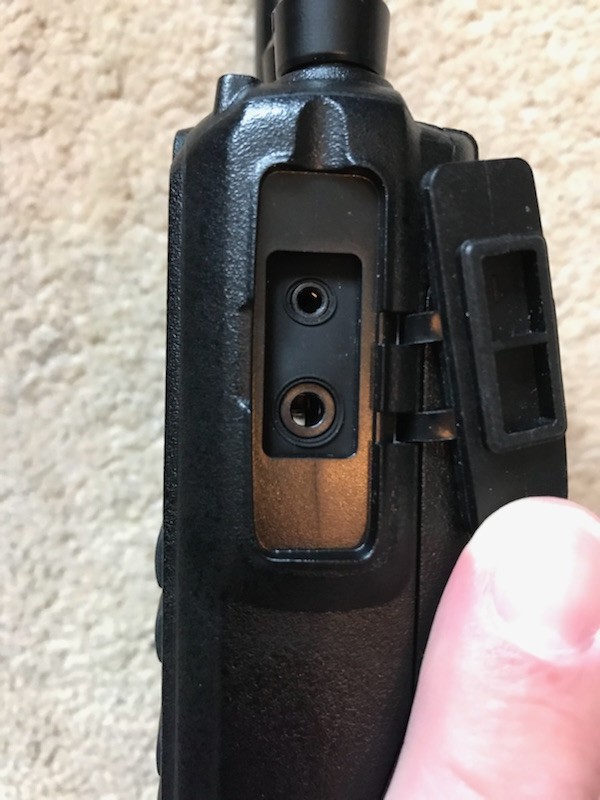

Is the radio end of the USB cable a Kenwood style connector like the TYTs ?
Hi Malcolm,
It is indeed that style. I have used an external mic with this radio and the type I used also works on my Icom ID-51. Hope that helps?
Paul G7BHE
Great review I have found Anytone to be good value for money radios and well built too ideal for the new licenced amateur 6 watts dual band 2/70 plus Dmr
all the main uk dealers now have them
(M1ECC)
Hi Paul,
A nice down to earth review. What’s the programming software like? Better or worse than the TYT MD380? Can you copy from one codeplug and paste into another for example.
Thanks,
Neil.
Yes there are tools about. Look at bridgecomsystems.com and take it from there.
Likewise there are tools about for the editing and import or contacts in CSV form.
I love mine, have had for about 4/5 months now. I use it for everything 2/70 repeaters. DMR RF, DMR Openspot, Works PMR, then also set up zones for scanning of GMRS and FRS Railways local PMR towers etc here and at home. All in zones.
I wrote my own codeplug.
Watch out for making sure the codeplug editor is the same version as your firmware otherwise you will be scratching your head wondering why its hanging or not writing to the radio.
Always be in the habit of :
downloading the codeplug from the radio
Make your edits
Save the codeplug to your computer using some sort of date code like 1180412 so you can rollback
Write codeplug to radio
That way you will always have something to go back to should it go titsup or your experimenting.
I also adjusted some of the button funtions, ie one of the buttons i made scan, so i can select zone such as GMRS and then just hit scan.
My only negative is soo small its not worth worrying about. It’s the minimum volume of the radio/bargraph. Its loud even on the minimum volume. Id like to see that go down a bit. Still works perfect and pumps beautiful audio out without distortion as you turn it up.
All in all big thumbs up from me overall. And for the price, no brainer. No more carrying 3 radios.
73 Sii…
BTW,
When I’m at work i’m normally listening DMR on the RF side through VE3NXS repeater to the North America talkgroup.
And I’m 5 hours behind you if you ever fancy a chat.
Sii…
Thanks for the comments Dave.
Neil, the CPS software is the usual clunky stuff. I have decided that the quickest way to do the edits is to export the codeplug channels, zones etc to a spreadsheet and do the edits there. Then import back into the CPS and Bobs your uncle.
73 Paul
Being able to import / export .csv files is a big step up from most CPS software!
Hi,
I just needed some advice about purchasing a radio/scanner in the north of the UK. I have at present been hearing various conversations when on my mobile and landline interference.. I had friends that have a scanner and radio/laptop is it possible to scan these frequencies and listen in to my private conversations? I just need validation that this can happen as the other party refuses to acknowledge there action or stop what they are doing… to me…
Kind Regards
Janet Rostron
Hi Janet,
Many years ago, when mobile phones were analogue, it was possible to listen in to mobile calls on a scanner, but the UK network has been fully digital for many years, and calls are encrypted, so can’t be listened in to on a scanner. Same with home cordless phones – they used to be analogue and could be listened in to, but modern DECT phones are encrypted and can’t be ‘snooped’ by a scanner.
Does that help?
Pete
Here is a link to an independent UK based website http://at-d868uv.webs.com
Site appears to be down?
73
Roger,
G1LIW
Bought my anytone at-d868uv and cant get it to unmute while recieving digital. This is my first dmr radio but i can’t help but wonder if its the radio…
Hi, after emailing Pete he pointed me here with my queries, thanks Pete ;o)
AnyTone AT-D868UV
Moonraker were good enough to install the plug code for me I didnt have a dmr ID but I do now and this is my query.
Despite trying all ways I know to get the virtual com port to install I just cant do it do you have any tips/help on getting this to install correctly Win7
That follows with can I add my dmr ID direct on the radio because thats what i am trying to do.
Hope you guys can help
Hi.
Doesnt it feel top thick/fat with that 3100mah battery?
Ive had md380 and it was just fine.
This one looks very thick :)
Im taking abount when you want to carry it on a belt, backpack or jacket.
Thnx.
Tom
Excellent review a question please before I purchase one my only computer is an MacBook Air, which as you know us Apple and I ask whether this particular Anytone will work with Apple
Run Windows in Virtual Mode on the Macbook if the CPS software doesnt run on Macs.